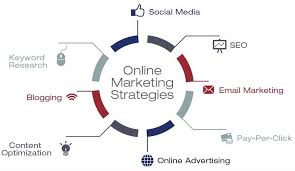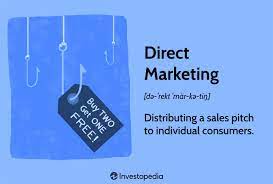Integrated Digital Marketing: The Power of Synergy
In today’s fast-paced and interconnected digital landscape, businesses are constantly seeking innovative ways to reach their target audience and stand out from the competition. This is where integrated digital marketing comes into play – a powerful strategy that combines various online marketing channels to create a cohesive and impactful brand presence.
Integrated digital marketing goes beyond the traditional approach of using individual channels such as search engine optimization (SEO), social media marketing, content marketing, or email marketing in isolation. Instead, it focuses on synchronizing these channels to work together seamlessly, amplifying their effectiveness and generating better outcomes.
The Benefits of Integrated Digital Marketing
Consistency: By integrating different channels, businesses can ensure that their brand message remains consistent across all touchpoints. Whether it’s a social media post, a blog article, or an email campaign, customers will experience a unified brand voice and identity. This consistency builds trust and strengthens brand recall.
Increased Reach: Integrated digital marketing allows businesses to reach a wider audience by leveraging the strengths of each channel. For example, combining SEO with social media advertising can attract organic traffic while targeting specific demographics through paid campaigns. This multi-channel approach maximizes visibility and expands the potential customer base.
Enhanced Customer Experience: By integrating various channels, businesses can provide a seamless customer journey from discovery to conversion. For instance, a customer who discovers a product through social media can easily navigate to the website for more information and make a purchase without any friction. This cohesive experience enhances customer satisfaction and increases the likelihood of repeat business.
Data-Driven Insights: Integrated digital marketing allows for comprehensive data collection across multiple channels. By analyzing this data holistically, businesses gain valuable insights into customer behavior, preferences, and trends. These insights can inform future marketing strategies, enabling businesses to optimize campaigns and deliver personalized experiences that resonate with their target audience.
Implementing Integrated Digital Marketing
Define Clear Objectives: Start by identifying your business goals and aligning them with your digital marketing strategy. Whether it’s increasing brand awareness, driving website traffic, or boosting conversions, having well-defined objectives will guide your integrated approach.
Understand Your Audience: Gain a deep understanding of your target audience – their demographics, interests, and online behavior. This information will help you determine which channels are most effective in reaching and engaging with them.
Develop a Cohesive Brand Identity: Ensure that your brand identity is consistent across all channels. From visual elements like logos and color schemes to messaging tone and style, maintaining a cohesive brand image is crucial for integrated digital marketing success.
Choose the Right Channels: Select the channels that align best with your target audience and business goals. Consider factors such as reach, engagement potential, cost-effectiveness, and the ability to integrate seamlessly with other channels.
Coordinate Campaigns: Plan and execute campaigns that leverage multiple channels simultaneously. For example, you can create content for your blog or website and promote it through social media platforms while incorporating relevant keywords for SEO optimization.
Monitor and Analyze Results: Regularly monitor the performance of your integrated campaigns using analytics tools. Measure key metrics such as website traffic, engagement rates, conversion rates, and ROI to evaluate the effectiveness of each channel and make data-driven adjustments as needed.
The Future of Integrated Digital Marketing
As technology continues to evolve at a rapid pace, integrated digital marketing will become even more critical for businesses aiming to stay competitive in the digital realm. The rise of artificial intelligence, automation, and personalized marketing will further enhance the potential of integrated strategies, enabling businesses to deliver highly targeted and relevant experiences to their customers.
By harnessing the power of synergy among various digital marketing channels, businesses can create a cohesive brand presence, reach a wider audience, enhance customer experiences, and gain valuable insights. Integrated digital marketing is not just a trend; it’s a strategic approach that empowers businesses to thrive in the digital age.
Unlocking the Power of Synergy: Top 5 FAQs on Integrated Digital Marketing Success
- What is an example of integrated marketing?
- Why is integrated digital marketing important?
- What are the 8 key components of integrated marketing?
- What are the 4 P’s of integrated marketing?
- How do you create an integrated digital marketing strategy?
What is an example of integrated marketing?
An example of integrated marketing is a clothing brand that launches a new product line. They start by creating engaging content on their blog and social media platforms to generate awareness and interest. They then leverage search engine optimization techniques to ensure their website ranks high in search results when potential customers are looking for similar products. Simultaneously, they run targeted social media advertising campaigns to reach their specific target audience. The brand also sends out personalized email newsletters to their existing customer base, highlighting the new product line and offering exclusive discounts. Finally, they collaborate with influencers in the fashion industry to create buzz and generate user-generated content. By seamlessly integrating these various marketing channels, the clothing brand creates a unified and impactful campaign that maximizes reach, engagement, and conversions.
Why is integrated digital marketing important?
Integrated digital marketing is crucial because it allows businesses to create a unified and consistent brand presence across various online channels. By synchronizing different marketing strategies such as SEO, social media, content marketing, and email campaigns, businesses can maximize their reach and engage with a wider audience. Furthermore, integrated digital marketing enhances the customer experience by providing a seamless journey from discovery to conversion. It also enables businesses to gather comprehensive data insights that inform future marketing strategies and deliver personalized experiences. In essence, integrated digital marketing empowers businesses to stay competitive in the digital landscape and effectively connect with their target audience.
What are the 8 key components of integrated marketing?
Integrated marketing encompasses various elements that work together to create a unified and impactful marketing strategy. The 8 key components of integrated marketing include branding, advertising, public relations, direct marketing, social media marketing, content marketing, search engine optimization (SEO), and analytics. Each component plays a crucial role in building brand awareness, engaging with the target audience, driving conversions, and measuring the effectiveness of the overall marketing efforts. By integrating these components seamlessly, businesses can create a cohesive and consistent brand experience across multiple channels, maximizing their reach and impact in today’s digital landscape.
What are the 4 P’s of integrated marketing?
The 4 P’s of integrated marketing refer to the key elements that businesses need to consider when implementing an integrated digital marketing strategy. These P’s are Product, Price, Place, and Promotion. Product refers to the specific offerings that a business provides and how they meet customer needs. Price involves determining the right pricing strategy to ensure profitability while remaining competitive. Place focuses on selecting the appropriate channels and distribution methods to reach the target audience effectively. Lastly, Promotion encompasses the various tactics used to create awareness and generate demand for the product or service. By strategically addressing these 4 P’s, businesses can develop a comprehensive and cohesive integrated marketing plan that maximizes their chances of success in the digital landscape.
How do you create an integrated digital marketing strategy?
Creating an integrated digital marketing strategy involves several key steps. First, clearly define your business objectives and align them with your digital marketing goals. Next, gain a deep understanding of your target audience and their online behavior to determine which channels will be most effective in reaching them. Develop a cohesive brand identity that remains consistent across all channels, ensuring a unified brand voice and image. Choose the right mix of channels that align with your audience and goals, considering factors such as reach, engagement potential, and integration capabilities. Coordinate campaigns across multiple channels, leveraging each channel’s strengths to create a seamless customer journey. Regularly monitor and analyze the results of your integrated campaigns using analytics tools to make data-driven adjustments as needed. By following these steps, businesses can create a comprehensive and effective integrated digital marketing strategy that maximizes their online presence and drives meaningful results.



